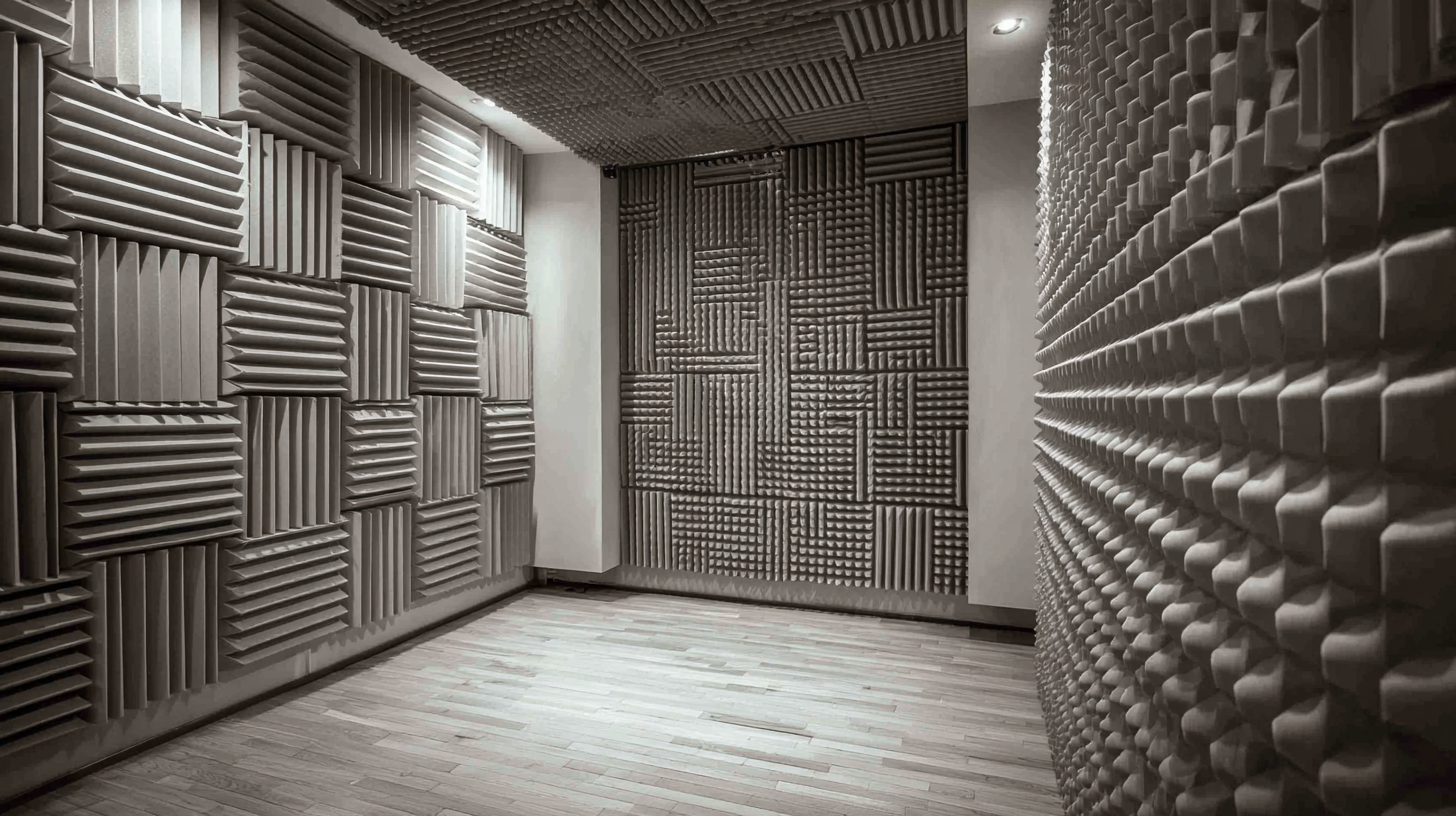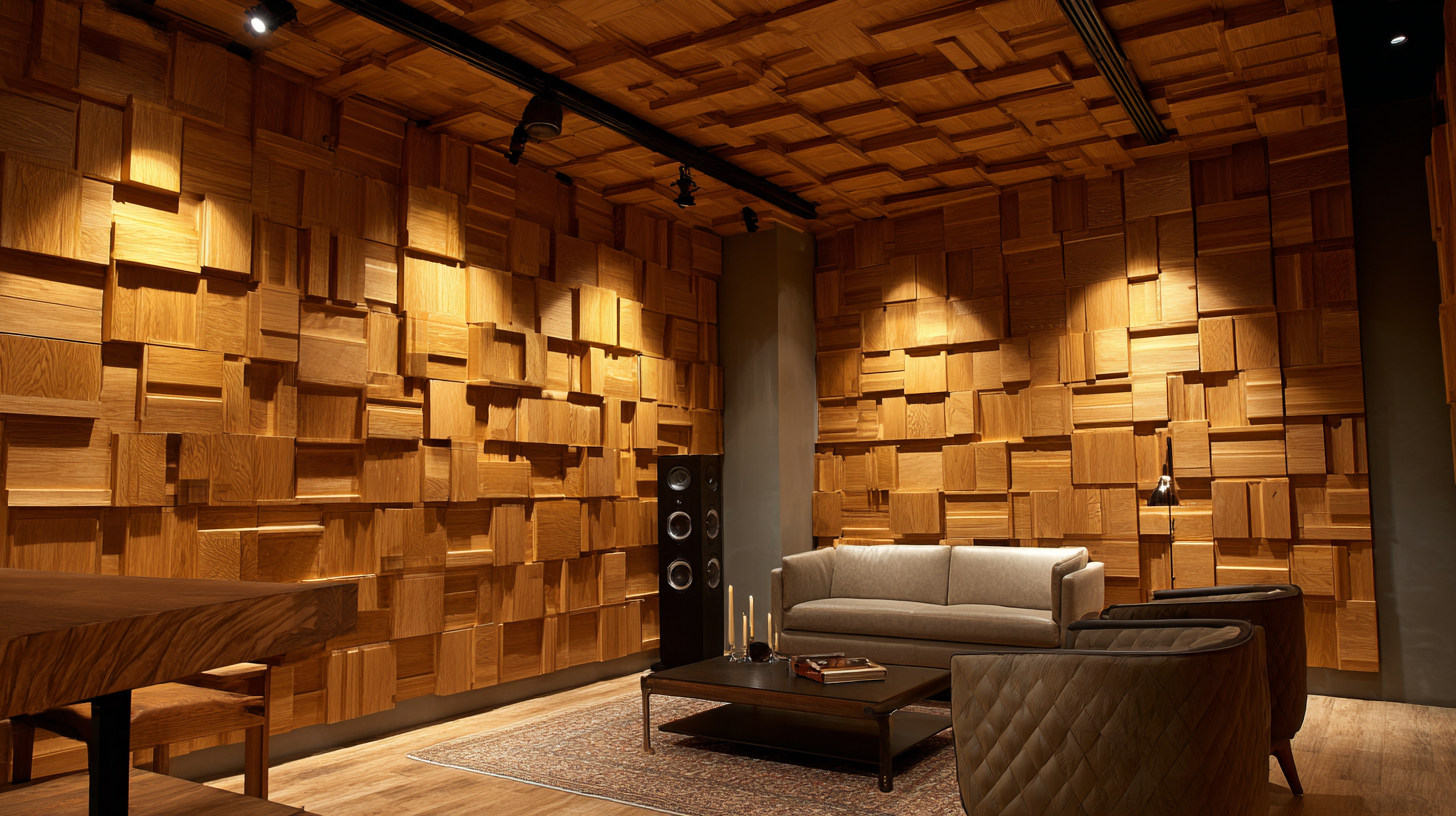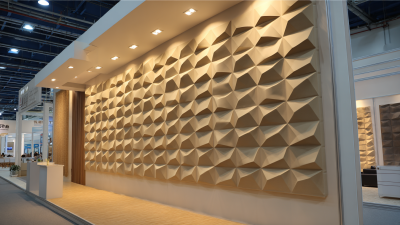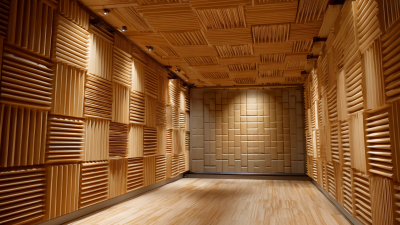The Ultimate Guide to Choosing the Best Soundproof Wall Panels for Your Home
In today’s increasingly connected world, the need for tranquility within our homes is more crucial than ever. Noise pollution has been identified as a significant environmental stressor, with studies indicating that over 70% of individuals report experiencing disturbances from external noise sources, such as traffic and construction, affecting their daily lives (World Health Organization, 2021). To combat this issue, many homeowners are turning to soundproof wall panels as an effective solution. These panels not only enhance the acoustic quality of a space but also improve its aesthetic appeal. According to a report by Grand View Research, the global soundproofing market is expected to reach $31.4 billion by 2025, driven by the increasing demand for noise control in residential and commercial settings. Selecting the right soundproof wall panels can dramatically transform your living environment, providing a peaceful sanctuary away from the chaos of the outside world.

Factors to Consider When Choosing Soundproof Wall Panels for Your Space
When selecting soundproof wall panels for your space, several critical factors come into play. Firstly, the material composition of the panels is paramount. According to the Acoustical Society of America, materials like mass-loaded vinyl and acoustic foam are effective in reducing sound transmission. Mass-loaded vinyl, for instance, can reduce noise by up to 26 decibels, making it ideal for both residential and commercial applications. Additionally, the density of the panel directly influences its soundproofing capabilities; denser materials tend to provide better sound insulation.
Another essential factor is the installation process. Some panels require specific mounting techniques to maximize their sound-dampening effects. A report by The International Institute of Noise Control Engineering highlights that improper installation can result in a substantial decrease in performance, negating the potential benefits of the panels. Furthermore, consider the space's unique acoustic needs. For example, a home theater might benefit from thicker, softer panels that absorb sound, while a shared office space may prioritize panels that block external noise effectively. Identifying your specific requirements will ensure that you choose the most suitable soundproof wall panels for your environment.
The Ultimate Guide to Choosing the Best Soundproof Wall Panels for Your Home
Top 5 Materials for Effective Soundproofing: Which One is Right for You?
When it comes to soundproofing your home, selecting the right materials for wall panels is crucial for achieving effective results. The top five materials that excel in sound absorption and noise reduction are fiberglass, acoustic foam, mass-loaded vinyl, wooden panels, and soundproof drywall. Each of these options has unique properties that cater to different needs and preferences.
Fiberglass panels are highly regarded for their excellent sound-absorbing qualities, making them ideal for studios or home theaters. Acoustic foam is another popular choice, known for its versatility and ease of installation, providing a stylish yet functional solution. Mass-loaded vinyl, though heavier, is highly effective at blocking sound transmission through walls, while wooden panels can add aesthetic appeal along with their sound-dampening abilities. Finally, soundproof drywall offers added thickness, enhancing both insulation and noise reduction. By understanding the characteristics of these materials, homeowners can make informed choices that best suit their specific soundproofing needs.
The Ultimate Guide to Choosing the Best Soundproof Wall Panels for Your Home
| Material Type | Sound Reduction Index (SRI) | Cost per Square Foot | Installation Difficulty | Best For |
|---|---|---|---|---|
| Acoustic Foam Panels | 20-30 dB | $1.50 - $4.00 | Easy | Home Studios, Theaters |
| Mass Loaded Vinyl (MLV) | 25-35 dB | $2.50 - $5.00 | Moderate | Apartments, Offices |
| Soundproof Drywall | 30-45 dB | $3.00 - $6.00 | Challenging | New Constructions, Renovations |
| Acoustic Panels | 25-35 dB | $1.50 - $5.00 | Easy | Live Music Venues, Recording Studios |
| Fiberboard Panels | 20-30 dB | $2.00 - $4.50 | Moderate | Residential, Commercial |
How to Measure Your Rooms for Optimal Soundproof Panel Installation
When it comes to installing soundproof wall panels, accurate measurements are crucial for achieving optimal results. Start by assessing the dimensions of the room where you plan to install the panels. Use a reliable measuring tape to record the height and width of the walls, paying careful attention to any irregularities such as windows, doors, or built-in furniture that could affect the panel layout. Document these measurements to create a clear visual plan, which will help you determine how many panels you will need and where they will be placed for maximum sound absorption.
Next, consider the room's acoustics in addition to its dimensions. The layout of furniture and wall textures can influence sound quality significantly. Evaluate wall surfaces for any existing materials that could either hinder or enhance the performance of soundproof panels. Take note of these factors as you finalize your design. By measuring accurately and considering the overall acoustics, you'll ensure that your choice of soundproof wall panels not only fits perfectly but also significantly reduces unwanted noise, creating a more peaceful and enjoyable environment in your home.

Best Techniques for Installing Soundproof Wall Panels Like a Pro
When it comes to installing soundproof wall panels, achieving professional results requires more than just choosing the right materials; it’s also about employing the best installation techniques. According to a study by the Acoustical Society of America, properly installed soundproofing can reduce noise levels by up to 50%, making it essential to follow key practices. One effective technique is ensuring that panels are applied to walls with minimal gaps, as even small openings can significantly diminish soundproofing effectiveness.
Another critical aspect is the use of soundproof adhesive or construction glue for mounting the panels. Research from the National Institute of Standards and Technology highlights that adhesive-backed panels can enhance sound insulation by providing better coupling with the wall structure. Additionally, utilizing techniques like staggered seams and adding acoustic caulk around edges can further improve the installation’s soundproofing capabilities. By integrating these professional methods, homeowners can transform their spaces into tranquil retreats while maximizing the performance of their soundproof wall panels.
Cost-Effective Soundproofing Solutions: Budget-Friendly Panel Options
When it comes to soundproofing your home on a budget, exploring cost-effective soundproof wall panels can be a game-changer. Recent studies indicate that the demand for acoustic panels is surging globally, driven by increased urbanization and construction projects. Affordable solutions like fabric acoustic panels not only enhance sound insulation but also add an aesthetic touch to any space.
 Additionally, advances in sustainable building materials are leading to the creation of innovative production technologies that can lower costs while maintaining high performance.
Additionally, advances in sustainable building materials are leading to the creation of innovative production technologies that can lower costs while maintaining high performance.
For those looking to maximize the value of their soundproofing investment, a diverse range of biodegradable and eco-friendly materials is emerging, making it possible to achieve effective sound reduction without sacrificing environmental integrity. Reports suggest that these developments align with a growing consumer preference for sustainable products, highlighting a trend where homeowners can enjoy both functionality and style. Strategies such as utilizing faux wall paneling can also serve to achieve a premium appearance while adhering to budget constraints, making soundproofing accessible for every homeowner.
Related Posts
-

Exploring the Market Trends of Sound Absorbing Wall Panels at 2025 China Import and Export Fair
-

What Are The Benefits of Installing Sound Panels for Walls?
-

Discover the Science Behind Sound Proof Panels: How They Transform Your Space into a Quiet Oasis
-

Transform Your Space with Innovative Acoustic Art Panels for Ultimate Sound Comfort
-

Transform Your Space: The Surprising Benefits of Acoustic Ceiling Tiles Explained
-

Exploring the Benefits of Soundproof Rooms for Enhanced Productivity in Home Offices

